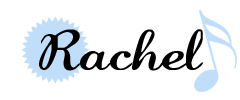Can you believe that we are more than halfway through the month of March already? Spring is finally here and we are in the middle of celebrating Music in Our Schools Month! There is so much to be happy about!
For today's post, I'm going to share a brilliant idea that I learned about several years ago at a workshop: Rhythm Sudoku.
If you are anything like me, you probably first heard about Sudoku about eight years ago. Maybe you never really got into it because "math isn't your thing" (which is ironic because a Sudoku puzzle actually doesn't require any arithmetic.) Or maybe you have experience completing the puzzles and are wondering how on earth these number squares can relate to rhythm.
Either way, I'm happy to show you! In this post, I'll walk you through the steps required to make your own Rhythm Sudoku puzzle (or for those of you more results-oriented, you can buy ready made ones in my store. But that really does take all of the fun out of it, don't you think?)
A traditional Sudoku grid is 9x9, but we don't need to get quite so involved with ours! Let's make a 4x4 grid to start out. Once your puzzle is complete, you can think of it like a composition with four measures of four beats each.
This will be the most time-consuming portion, but once you get the hang of creating them, you should be able to create a puzzle in a minute or two.
You have to select four different rhythms to use in your puzzle. Start plugging them in the grid wherever they fit. You can't have the same rhythm twice in any row or column.
Make sure you make note of what your completed puzzle looks like. Then, you can erase most of the rhythms so that your puzzle is ready! The more squares you erase, the more difficult your puzzle will be. For beginner level puzzles, I like to make it so that at least one row or column can be solved immediately.
Once you have created your puzzle, you are ready to share with your students. I like to create several puzzles of increasing difficulty levels to challenge my students as they are ready. Once they have solved the whole puzzle, they have a grid of music notation, which can be used for reading practice.
You can read them the "right way," as in read each beat from left to right. Or, for more crazy fun, you can read the lines backwards. Or you can read the columns going up or down. There are so many different combinations and ways to interact with the completed puzzle grid! It's a surefire way to keep kids curious and engaged while reciting rhythm syllables!







Oh my gosh!
ReplyDeleteI love your rhythm sudoku idea!
You are a hard worker. I see you posted this at 5:30am! You are crazy!
Love your blog :)